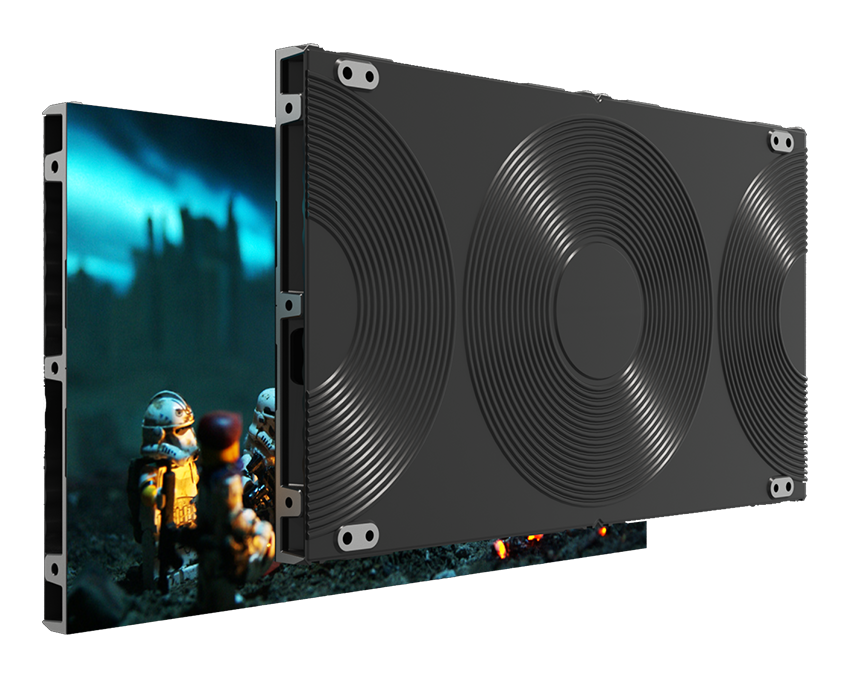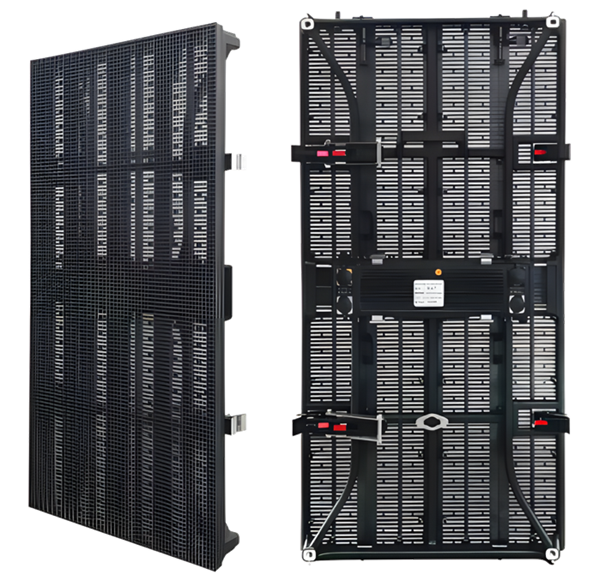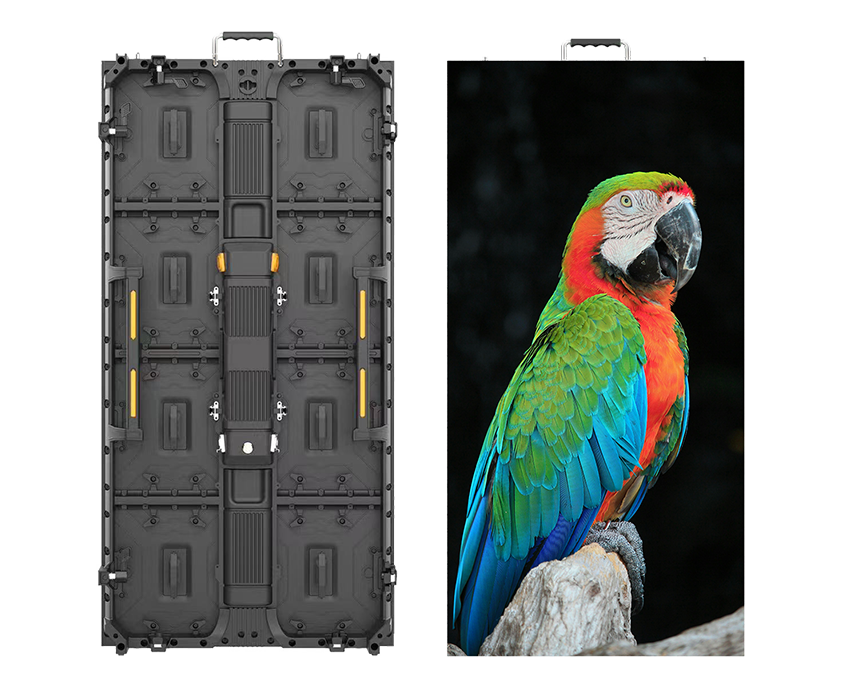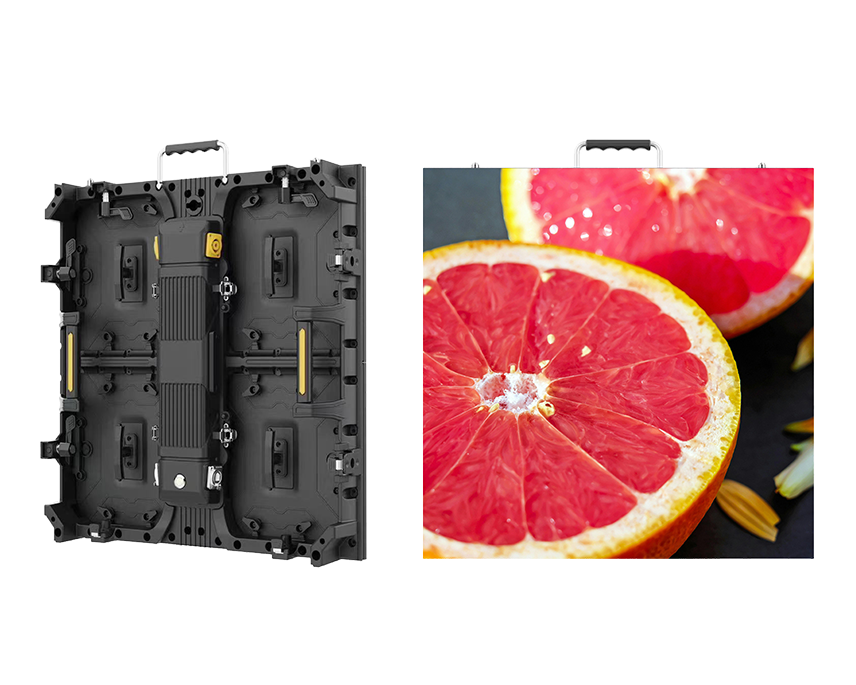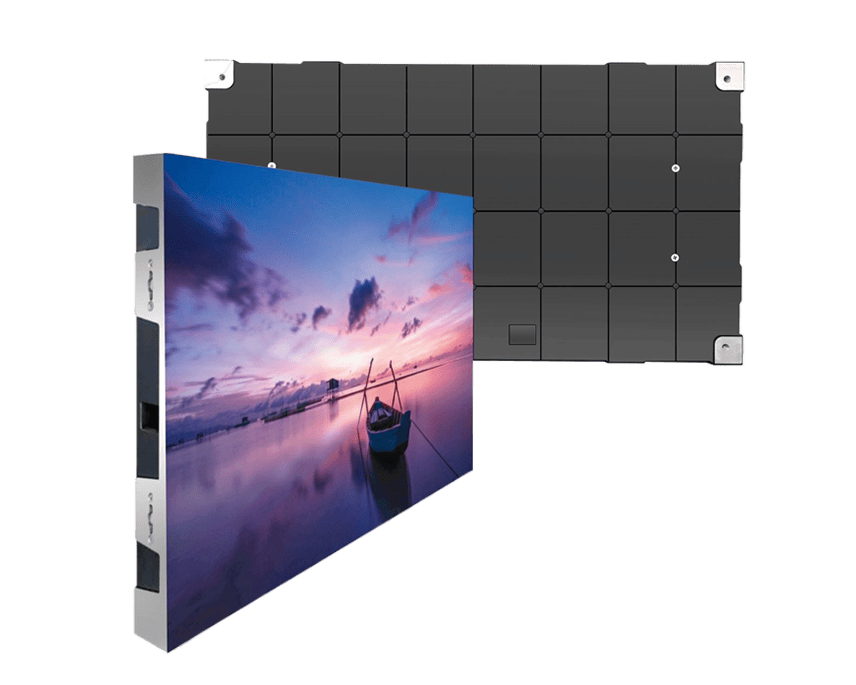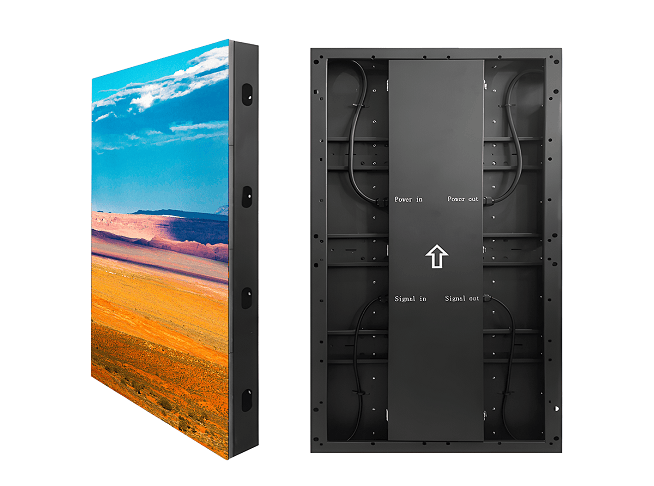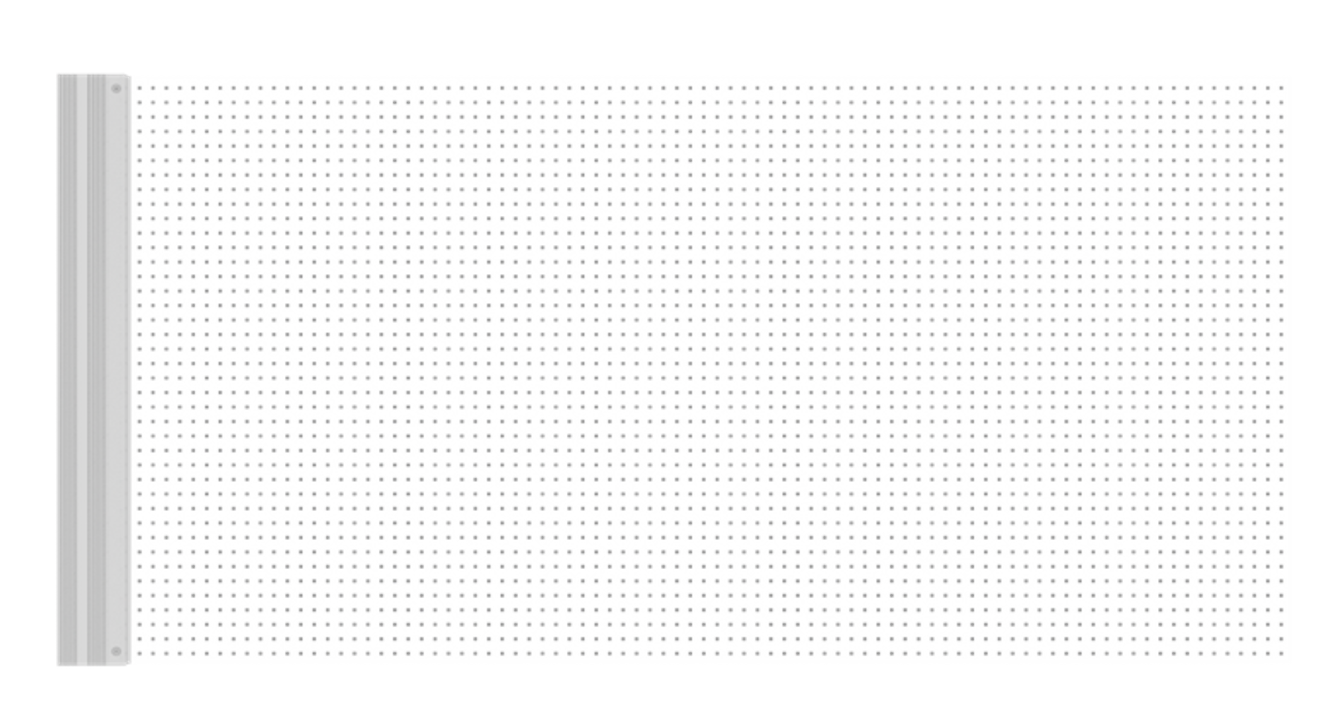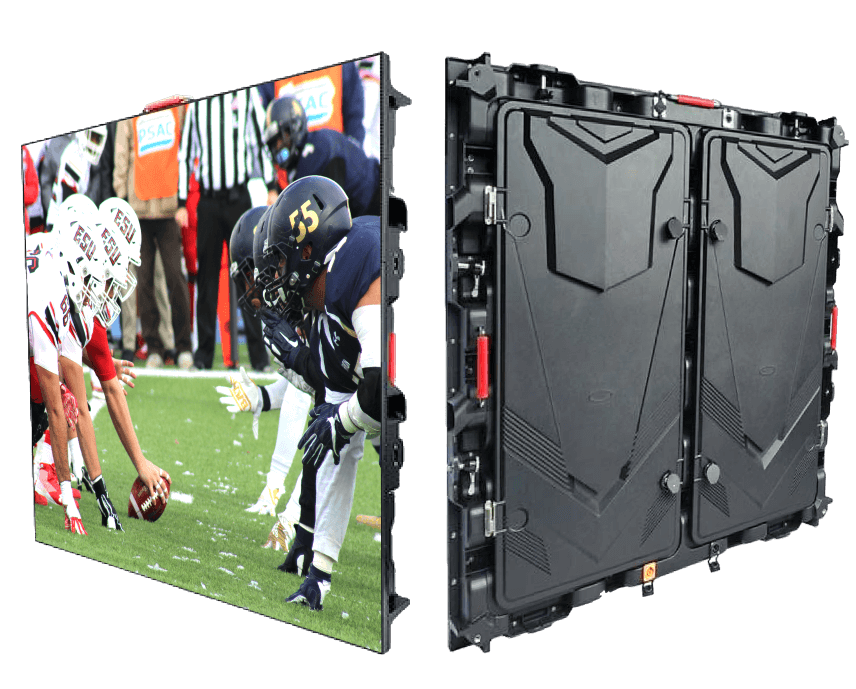In LED display projects, brightness isn't just about being “bright enough.” It's about how light is measured, perceived, and applied. To choose the right screen—especially in demanding environments like outdoor advertising or broadcasting—you need to understand three key terms: candela, lux, and lumens. Though related, each reveals something different about how a display performs.
1. What Is Candela (cd)?
Candela is the SI unit of luminous intensity, which refers to the amount of light emitted by a source in a specific direction. Imagine looking directly into a flashlight beam—candela tells you how intense that beam appears. One candela represents the intensity of a light source emitting monochromatic radiation at a frequency of 540 THz with a radiant intensity of 1/683 watt per steradian.
In the context of LED displays, candela is especially relevant when evaluating the brightness of individual LEDs or clusters. High-end displays often specify brightness in terms of candelas per square meter (cd/m²), also known as nits. This helps installers and users understand how bright the display will appear when viewed head-on.
For example, a typical indoor display may offer a brightness level of around 800–1200 nits, while outdoor displays often exceed 5000 nits to combat ambient daylight. Candela values, therefore, are critical in defining whether an LED screen is visible in sunlit environments or suited for dimly lit conference rooms.
Moreover, candela is the basis for more complex photometric measurements. It's used in determining light uniformity, pixel intensity consistency, and directional brightness—all crucial for ensuring that an image is vibrant and evenly distributed across a large-format LED screen.

2. What Is Lux (lx)?
Lux measures illuminance, or how much luminous flux (light) falls on a given area. One lux equals one lumen per square meter. If you place a 100-lumen bulb in a room and it uniformly lights a 10-square-meter area, the illuminance is 10 lux.
This unit becomes particularly important when designing or installing LED screens in environments where ambient lighting varies significantly. For instance, a display in an airport concourse needs a much higher lux value to remain legible compared to one in a darkened theater lobby.
Lux also ties directly to human visual comfort. Inadequate illuminance leads to visual fatigue, while excessive brightness causes glare. For applications such as control rooms, retail spaces, or broadcasting studios, maintaining an optimal lux level ensures that the content is both visible and comfortable to view.
Additionally, the perception of display quality—sharpness, contrast, and clarity—is strongly influenced by the lux level at the viewer's eye position. When deploying LED video walls in varying lighting environments, designers often conduct on-site lux measurements to ensure consistent visibility.
3. What Are Lumens (lm)?
While candela focuses on intensity in a specific direction and lux describes how light spreads over an area, lumens represent total luminous flux: the overall amount of visible light emitted by a source.
Lumens tell you how bright a light source is in all directions, regardless of where it's aimed. If you're comparing two display panels with different pixel densities or backlight configurations, the total lumen output can help you assess how much usable light the system emits.
In the LED display industry, lumens are often referenced when evaluating auxiliary lighting systems, such as backlighting, edge lighting, or architectural integrations. Though LED modules themselves are rarely specified in lumens for display purposes, the component LEDs are rated for their luminous flux during the design phase.
For large-scale installations, especially rental displays or trade show booths where general brightness matters more than targeted intensity, total lumens can offer a baseline measure of visual impact.
Lumens are also a handy benchmark when converting traditional signage to LED systems. Understanding how many lumens are needed to replace fluorescent or halogen lights helps ensure consistent visual performance while lowering power consumption.

4. The Relationship Between Candela, Lux, and Lumens
Although candela, lux, and lumens all measure aspects of light, they are not interchangeable. Their relationship can be understood as follows:
-
Candela measures luminous intensity in a specific direction.
-
Lumens measure the total amount of light emitted in all directions.
-
Lux measures how that light spreads over a surface area.
The mathematical connection is built around geometry. One candela emits one lumen per steradian (a unit of solid angle). So, if a light source emits one candela uniformly across a one-steradian angle, its total luminous flux is one lumen.
Lux comes into play when that light hits a surface. One lumen spread over one square meter gives you one lux. Double the area, and the lux value halves.
This interdependence means that no single unit can fully describe a lighting system's performance. For instance, a high candela value may not guarantee brightness if the beam angle is narrow. Similarly, a high lumen output might result in low lux if spread over a large area.
When assessing LED displays, all three units offer valuable insights. A screen with high candelas may excel in focused brightness, while high lux ensures ambient legibility, and high lumens help quantify general visual impact.
5. How to Calculate Each Unit
5.1 Calculating Candela
To calculate candela, the standard formula is:
1 candela = 1 lumen per steradian
If a light source emits 100 lumens evenly in a cone-shaped beam covering 2 steradians, the luminous intensity is 50 candelas. In LED display terms, this helps engineers determine how much intensity each pixel or module needs for the desired viewing distance and angle.
This metric becomes essential when building LED modules for applications that require directional intensity, such as stadium scoreboards or high-contrast outdoor signage.
5.2 Calculating Lux
Lux is calculated as:
1 lux = 1 lumen / square meter
If an LED floodlight emits 1000 lumens and illuminates an area of 10 m², the surface illumination is 100 lux. As distance increases, lux drops significantly, following the inverse-square law.
For LED display design, understanding lux allows for strategic screen placement. A screen 5 meters high may deliver 500 lux at eye level, while the same display at 15 meters could deliver only 55 lux. Using lux meters during site surveys helps optimize installation height and orientation.
5.3 Calculating Lumens
To estimate total lumens, you need the candela and beam angle:
Lumen = Candela × Steradian angle
Since 1 steradian is about 12.57 degrees of a full sphere, engineers often use beam spread and distance to estimate lumens. For display applications, this is typically handled at the component level, ensuring each LED chip meets brightness targets.
Lumens also help estimate energy efficiency. If a display consumes 300W and produces 15,000 lumens, its efficacy is 50 lumens per watt—important for large installations with energy consumption goals.

6. Why These Units Matter in LED Display Selection
Selecting the right LED display is not just about resolution or size—it's also about ensuring the screen delivers the right brightness under the right conditions. Here's how understanding candela, lux, and lumens supports smarter decisions:
-
High Candela for Outdoor Use: Outdoor displays, like digital billboards or stadium signage, need high candela values to overcome sunlight. A display rated at 6000 nits (cd/m²) will remain visible even in direct daylight.
-
Optimal Lux for Viewing Comfort: In conference rooms or shopping malls, screens must maintain a comfortable lux level at various distances. Poor lux balance can result in eye strain or unreadable content.
-
Lumens for General Impact: When setting up temporary installations such as exhibitions or mobile LED trucks, total lumens help ensure the display delivers sufficient brightness without excessive power consumption.
Different products address different needs. For example, the Outdoor LED Video Wall focuses on maximizing candelas for sunlight visibility, while fine-pitch indoor screens aim for balanced lux and efficient lumens in confined spaces.
Understanding how these light metrics work together allows integrators, engineers, and designers to choose systems that not only look great but also perform reliably under real-world conditions.
Final Thoughts
Candela, lux, and lumens each tell a different part of the lighting story. Together, they help define how bright a display looks, how evenly it lights an area, and how much light it produces overall—crucial for choosing the right LED display in any environment.
For tailored LED display solutions or technical support, feel free to reach out to our team at info@ptcled.com. We're here to help you make the right choice.









